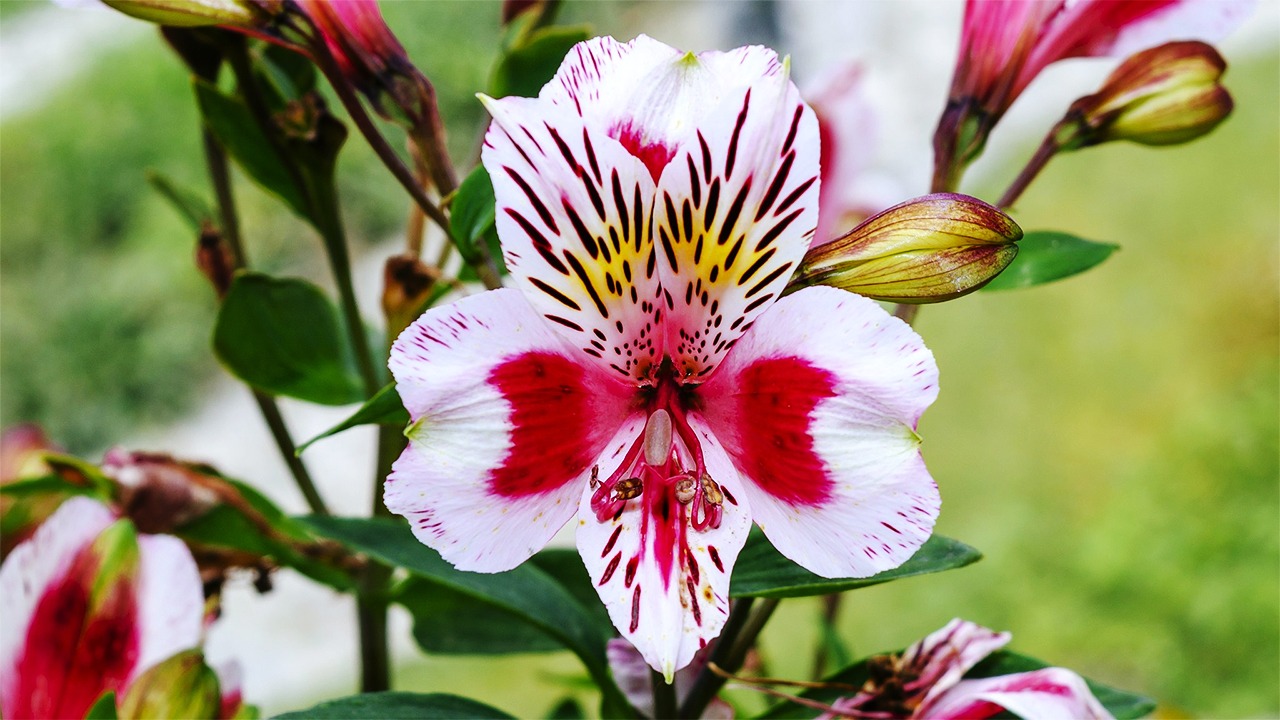
Years ago, my husband Bruce and I planted the elegant spring - to summer-flowering Peruvian lilies (Alstroemeria) in containers as highlight accents in our garden.
by Sharon Asakawa
Because the wind and visiting birds dispersed their seeds, they now pop up in the most serendipitous places peaking amidst rosebushes, squeezing in other pots, standing tall in a mass of ivy and geraniums, and waving “Look at me!” in the middle of a raised vegetable plot. With their gray-green lance-shaped leaves along tall flower stalks that hold several trumpet-like blossoms in hues of bronze, orange, yellow, purple, pink, red, and cream, and bi-colors along with contrasting streaks, stripes or spots, they set up residence in unplanned spots, but they lend a touch of whimsy and softness to an otherwise regimented landscape.
Plant in spring after the last frost plant and find a sunny spot in well-draining soil, but keep away from hot, dry conditions such as drought and blustery winds, and freezing temperatures. Where summer temperatures are high, plant in partial shade. Provide regular water and fertilize monthly during the growing and blooming seasons with water-soluble organic food. Clip off the spent flowers if you do not want any seed production. When plants go dormant, do not water unless there are no winter rains. For cut flowers and to encourage the development of more blooming stems, yank out the entire stem of the plant.
From our experience, whether purposely planted in the middle of borders, mixed-flower beds, in containers, or serendipitous escapees, Peruvian lilies are whimsical, carefree and beautiful, proof that Mother Nature is a talented landscape designer.
Note: Perhaps the best mail-order source for alstroemeria is Edelweiss Perennials. They offer over 50 varieties. While Jan is the time to get the best selection there are still many choices available now.
